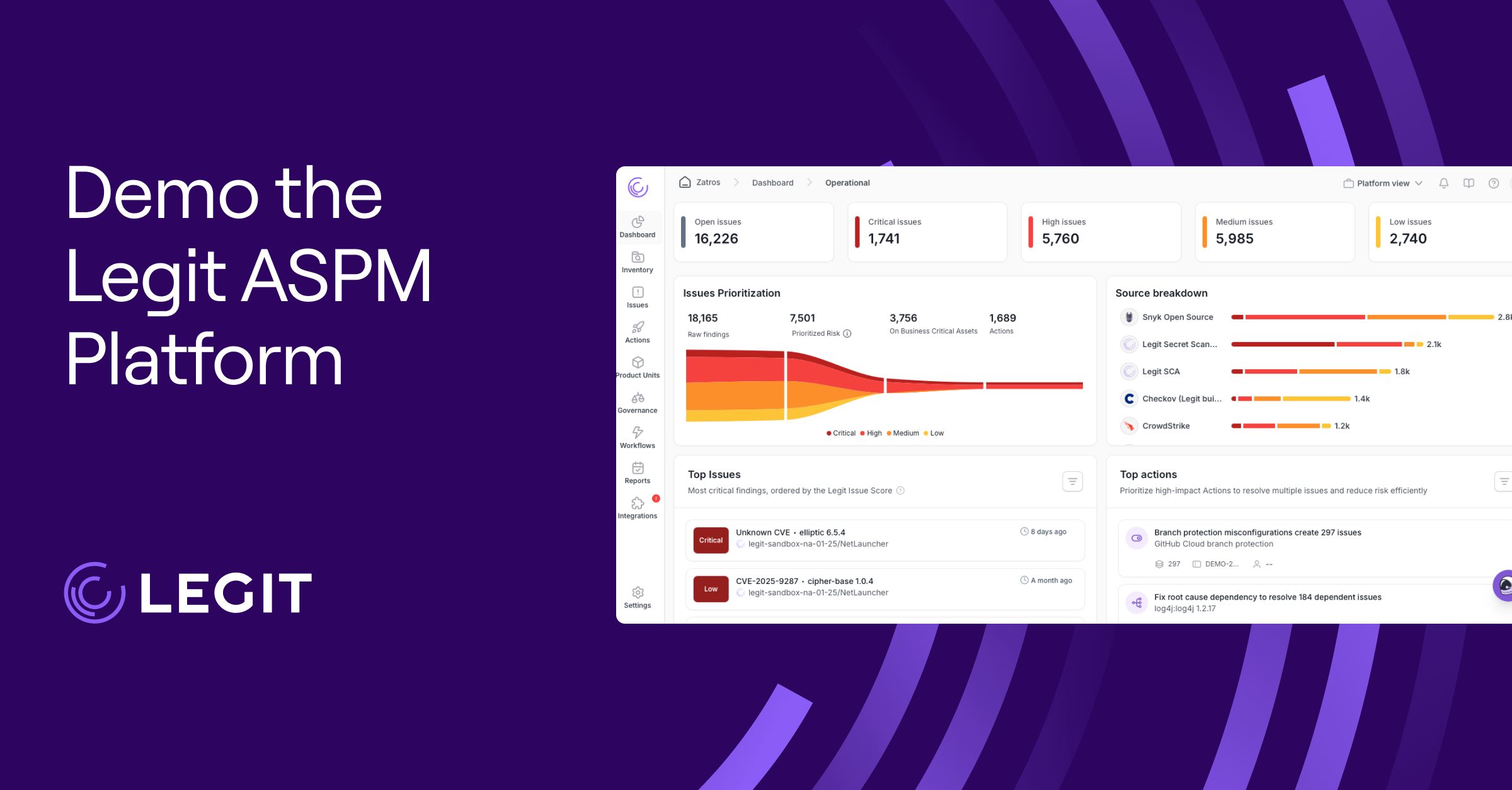As cyber threats continue to emerge and become more sophisticated, vulnerability management has become even more important to establish and maintain. However, despite its significance, many organizations struggle to fully understand and implement a consolidated vulnerability management program effectively.
In this article, we’ll go over vulnerability management, discuss four types of vulnerabilities you should focus on, and provide guidance on best practices to bring your vulnerability management system up to modern standards.
What Is Vulnerability Management?
Vulnerability management is a crucial component of any comprehensive cybersecurity strategy and consists of identifying, assessing, and prioritizing security vulnerabilities across systems, workloads, endpoints, apps, third-parties, and essentially any element that is part of an organization. Vulnerability management often consists of identification/classification, evaluation, remediation, verification and reporting them.
Vulnerabilities typically fall into four main categories:
Application vulnerabilities: Flaws in the software applications that can be exploited to compromise system integrity. Vulnerabilities could be on the code or database side as well as on the software side like with operating system vulnerabilities.
Configuration vulnerabilities: These occur due to misconfigurations in systems, making them more susceptible to attacks or accidental incidents. Common examples include misconfigured databases that make them publicly surfaceable or misconfigured SDLC systems and infrastructure that can lead to software supply chain attacks.
Open source software dependencies and operating system vulnerabilities: Weaknesses found here could potentially be taken advantage of by malicious actors. These vulnerabilities can be used to breach systems and devices by exploiting unpatched vulnerabilities within the software in question or potentially hijacking it via a malicious update.
Network vulnerabilities: These are flaws or weaknesses in a network's design, implementation, or operation that could potentially be exploited. Unprotected access points are also a form of network vulnerabilities that lead to common attacks such as Man-in-the-Middle (MitM) attacks and DDoS attacks.
The importance of vulnerability management and remediation cannot be overstated. Cybercrime continues to surge year after year, but with an effective vulnerability management approach alongside a robust application security strategy, organizations can find and eliminate any weaknesses in their code, systems, and apps and get ahead of any threats. For instance, in March 2023 alone, an alarming 41.9 million records were compromised due to cyber breaches, which speaks to risk involved, especially when companies aren’t properly addressing their vulnerabilities.
A well-executed vulnerability management strategy not only provides an additional level of risk protection but also safeguards your product from exploits which can further protect your company’s reputation by avoiding costly and damaging data breaches. With a comprehensive strategy you can ensure the security of any proprietary technology and information, which will keep a company free from negative headlines tied to cyber risk and data integrity, ultimately maintaining the confidence of the company’s customers and partners. In addition to these vulnerability management benefits, these measures can also protect against regulatory fines and investigations of non-compliance as they demonstrate a tangible effort towards maintaining data security and a cyber resilient security posture.
Phases of the Vulnerability Management Process
Unfortunately, a robust vulnerability management process is sometimes de-prioritized in favor of customer-facing demands and is usually seen as a process that is too intrusive on an organization and its departments. However, one way to ensure that the system is streamlined, efficient, and able to grow alongside a company is by ensuring the process is emphasizing each phase of the vulnerability management lifecycle.
Here’s how they each break down.
Identification
The identification phase is the starting point of the vulnerability management process and consists of developing a comprehensive inventory of all IT assets within the organization, including those within the pre-production development environment. This is often done via asset visibility, discovery, and scanning tools specialized to look for data, apps, systems, assets, and code of a company’s development environment to ensure the inventory is as comprehensive and complete as possible.
The data gathered at this stage is essential for subsequent steps and to establish vulnerability management metrics that can be used to measure effectiveness of the program. Once you have complete visibility of your inventory, these same discovery and scanning tools can surface key vulnerabilities.
Evaluation
Once vulnerabilities have been identified, it’s time to evaluate them by their risk to you. This is often done quantitatively by evaluating and assigning a risk score to your discovered vulnerabilities. There are multiple risk-scoring frameworks such the Common Vulnerability Scoring System (CVSS) that can be utilized to have a consistent methodology for risk scoring.
Risk scoring is designed to identify the most critical vulnerabilities by knowing how much risk they expose you to. These could be vulnerabilities that leave your most sensitive data exposed, may lead to critical apps or systems becoming exploited, or they may be severe enough that business operations will be disrupted. Other, less severe vulnerabilities will be scored lower in order to establish priority and an order for remediation, which is the next step.
Remediation
After you have a sense of all your vulnerabilities, you can start addressing them based on their risk scoring and most appropriate remediation technique. If you’re using vulnerability management tools, they’ll be able to provide insightful guidance on which approach to take.
Your most common options are often remediation vs. mitigation or taking no action, depending on the vulnerability. For example, if there’s a critical vulnerability that has no fix or patch available, you might only be able to mitigate the risk of that vulnerability impacting your organization too severely. This can often be the case for newly discovered vulnerabilities or zero-day vulnerabilities. For more benign vulnerabilities, no action may be best until riskier vulnerabilities are mitigated or remediated.
Verification
Verification double-checks your remediation efforts often via a two-pronged approach which includes penetration testing and auditing to confirm the success of remediation efforts. This approach will not only ensure that a vulnerability is remediated but should also provide the insight and analysis an organization needs to make sure that the same vulnerability can’t be exploited again.
Reporting
This is the last phase and necessary for ensuring ongoing effectiveness of your vulnerability management program. This step is fundamental for long-term continuous improvement and is designed to discover vulnerability root causes and record how they were addressed.
By engaging in reporting, you’ll be able to have a more proactive approach to vulnerability mitigation, preventing repeat vulnerabilities, and streamlining the remediation process in the future while giving your strategy the capability to react to any new kind of vulnerability and new vulnerabilities that may come from expanding your organization’s environment or attack surface.
Vulnerability Management Best Practices for Maximum Security
Vulnerability management can seem like a daunting and complicated task, especially for those larger organizations. However, with best practices in place and effective tools, any size teams can streamline and optimize their vulnerability management in a way that reduces complexity, ultimately bolstering their cybersecurity framework.
1. Being proactive is key:
Waiting until a vulnerability leads to a compromise or an exploit is the last thing you want to do. You should instead adopt an anticipatory strategy and act before any vulnerability turns into an active threat. Following the framework outlined above should help identify critical vulnerabilities but you should also establish clear objectives and roles, as well as a practical roadmap. A good framework to follow is the one provided by NIST here (patch management, which has important similarities to vulnerability management).
2. Find the right tools:
Due to the breadth of visibility required, tools are must in order to save time and automate processes. Each phase of the vulnerability management process may require different sets of tools, and understanding what tools are best for your organization can significantly boost the phase’s effectiveness. Opt for vulnerability management tools that are intuitive and straightforward to eliminate any internal roadblocks and promote a more cohesive and effective process. You should also consider how compatible a tool is with your environment, whether it expands its reach to the cloud and your developer environment, and how much support the vendor provides.
3. Establish well-defined metrics:
This is another best practice that allows you to track progress and measure the effectiveness of your vulnerability management activities. Measurable metrics include the rate of resolved vulnerabilities by risk criticality, the time it takes to remediate vulnerabilities, or the rate of visibility into your environment. This data can be used to identify trends, areas for improvement, and spot any major gaps worth prioritizing.
4. Make this an ongoing effort:
Regular scanning helps maintain an up-to-date inventory of vulnerabilities and identifies any new risks that may have arisen, either as new vulnerabilities are discovered or as your digital footprint grows and changes. This ensures continuous vulnerability management that maintains its effectiveness even with an evolving set of threats and risks.
5. Look for automation:
Whenever and wherever possible, teams should automate repetitive and time-consuming tasks such as scanning and asset discovery tools. This will reduce the chance of human error missing a key asset or software while also significantly cutting down the time and effort required to implement a vulnerability management system. Otherwise, you’ll need a huge team just to handle the pure number of tasks required.
Among the tools you can use for vulnerability management, it’s important to prioritize asset discovery, the breadth of scanning, as well as the automation features to ensure teams are becoming more efficient via their tools. Legit Security's vulnerability management tools are designed to offer comprehensive scanning and discovery while being easy to use. With automated scanning, threat intelligence integration, risk rating, and prioritization, found in a user-friendly interface, it’s a tool.that provides powerful vulnerability management in the software development lifecycle, an area often ignored by most security tools.
By incorporating these vulnerability management best practices and utilizing high-quality tools, teams can build and maintain a robust and effective security posture that better protects their systems, data, and ultimately, their organizations.
Need Help Optimizing Your Vulnerability Management Process?
Vulnerability management is much more than a security best practice; it's a necessity for safeguarding crucial assets and mitigating risk in a proactive way. When properly implemented, it becomes an essential part of a comprehensive cybersecurity strategy that tangibly reduces the risk of a data breach, compromise, or accidental data exposure. Otherwise, companies are left open to potential attacks on assets, systems, or databases that they may not even know is interacting with their environments.
Leveraging the right tools, like those offered by Legit Security, and following vulnerability best practices can help companies optimize their vulnerability management and mitigation in a simpler way. If you're ready to level up your vulnerability management efforts, don't hesitate to get in touch with our team at Legit Security.
Ready to learn more? Schedule a product demo or check out the Legit Security Platform.
Download our new whitepaper.


